Federal and state law enforcement took aim at an alleged network of illegal marijuana operations in Colorado from August into October.
 A series of coordinated raids across the state resulted in more than 30 arrests over six weeks. The campaign is part of an effort by local police and federal agents to drive illegal cannabis syndicates out of business.
A series of coordinated raids across the state resulted in more than 30 arrests over six weeks. The campaign is part of an effort by local police and federal agents to drive illegal cannabis syndicates out of business.
The office of U.S. Attorney John Walsh announced the raids in early October, saying criminal charges would be filed against at least 34 people arrested during the busts. Walsh’s office had already filed multiple charges against secret cultivation operations throughout Colorado.
“This wave of marijuana grow operation sites is greater than we’ve seen the last couple of years,” Walsh told The Denver Post. “They seem to have the view that if I come to Colorado and set up a marijuana grow operation I won’t be noticed.”
But the legality of marijuana in the state may not be the only draw for illegal growers. Historic drought conditions in California may be driving farmers to better, wetter locales. Though the record dry spell has affected large parts of the American West, Colorado is not currently in a drought.
“Marijuana takes a lot of water to grow,” Walsh said.
Indeed, critics in California have complained that cannabis farms are contributing to the drought there by using up large amounts of precious water for irrigation. Marijuana plants require more water than most other crops.
Cannabis has minimal impact on California drought
Industry advocates say even if cannabis is contributing to the California drought, the difference isn’t much. And most of the blame lies with illegal growers, rather than those who legally grow medical marijuana there.
In Colorado, authorities said the 34 defendants were mostly from outside the state. Some were Mexican citizens, while others came from Honduras and Cuba. All face charges of illegally growing cannabis. Police said they uprooted about 20,000 plants and seized about 300 kilograms of dried marijuana during the raids.
Walsh said his office and state officials plan to keep the pressure on illegal operations. Colorado legalized marijuana for recreational use in 2012, along with Washington State; Alaska, Oregon, and the District of Columbia joined them in 2014. But the drug remains illegal for any use under federal law.
That, Walsh said, means federal agents will continue to act aggressively against illegal marijuana sites. The feds will also go after illegal out-of-state shipments, since moving any amount of cannabis from one state to another is a federal crime.
Concern of interstate trafficking
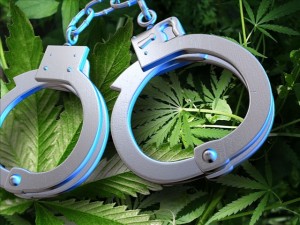 Federal officials said they’re concerned that marijuana is flowing from legal states into states where the drug is still prohibited. Observers have called those worries overblown and have pointed to data showing no uptick in interstate marijuana trafficking. Still, Walsh said federal agents would focus on transit issues.
Federal officials said they’re concerned that marijuana is flowing from legal states into states where the drug is still prohibited. Observers have called those worries overblown and have pointed to data showing no uptick in interstate marijuana trafficking. Still, Walsh said federal agents would focus on transit issues.
“There is strong evidence the marijuana is being shipped into other states where it is illegal and the price is higher,” he said.
The autumn raids targeted several farms. The biggest series of busts shut down an alleged ring operating in southern Colorado and resulted in 20 arrests on Sept. 1. That syndicate allegedly grew more than 1,000 cannabis plants at eight locations and sent the product to Florida by UPS. Agents said they found 28 guns during these busts.
Another grow site held 3,900 plants and was raided Aug. 19 in the Pike National Forest in Jefferson County. Agents also found 3,000 pounds of irrigation pipe, pesticides, camping gear, flammable liquids, and garbage, they said.
On Aug. 28 agents arrested two Mexican nationals in the Buffalo Pass region near Steamboat Springs. Roughly 1,000 plants were destroyed and one gun was confiscated.
Two arrests were made Sept. 7 in the San Isabel National Forest. This site contained nearly 12,000 plants, and agents found a gun, irrigation piping, pesticides, more flammable liquids, trash, and camping gear.
Four Mexican nationals were arrested Sept. 15 near a farm along the Dolores River on federal land. Park rangers found 1,200 marijuana plants, some growing up to six feet tall, and seized 211 kilograms of processed marijuana, as well as a rifle.
Another 1,000 plants were found Sept. 30 in Montrose, also along the Dolores River. A Honduran citizen and five Mexican nationals were arrested in this bust.
Cops Raid Illegal Grow Rings in Colorado
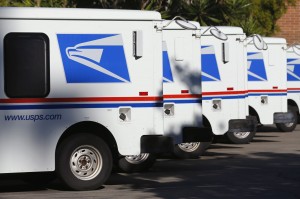 A New Jersey man called police in October when he received several packages intended for someone else. When officers opened the misdirected boxes, they discovered 50 pounds of marijuana.
A New Jersey man called police in October when he received several packages intended for someone else. When officers opened the misdirected boxes, they discovered 50 pounds of marijuana.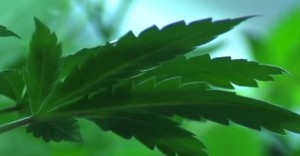 Those boxes arrived at Kahan’s Superette, a kosher deli, in early April by way of the U.S. Postal Service. The marijuana was hidden in 10 vacuum-sealed peanut butter bags. The disguise failed to fool police in New York, who seized the packages and launched an investigation.
Those boxes arrived at Kahan’s Superette, a kosher deli, in early April by way of the U.S. Postal Service. The marijuana was hidden in 10 vacuum-sealed peanut butter bags. The disguise failed to fool police in New York, who seized the packages and launched an investigation.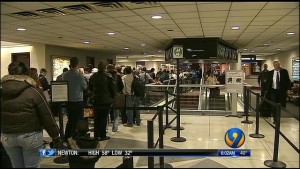 Deondre Smith, a 33-year-old resident of South Los Angeles, was arrested in October and charged with bribery of a public official and
Deondre Smith, a 33-year-old resident of South Los Angeles, was arrested in October and charged with bribery of a public official and  The TSA is already in a tight spot with
The TSA is already in a tight spot with  National elections, of course, fall every two years. Presidential candidates run for four-year terms, while members of Congress run for two-year terms and senators run for staggered six-year terms. With the exception of special elections to the House or Senate, there are no nationwide elections in odd-numbered years.
National elections, of course, fall every two years. Presidential candidates run for four-year terms, while members of Congress run for two-year terms and senators run for staggered six-year terms. With the exception of special elections to the House or Senate, there are no nationwide elections in odd-numbered years. It’s unclear what would happen if both issues pass – and polls suggest they will. At least one observer has predicted a “constitutional crisis” with no clear solution. Ohio has no mechanism for dealing with conflict in the state constitution.
It’s unclear what would happen if both issues pass – and polls suggest they will. At least one observer has predicted a “constitutional crisis” with no clear solution. Ohio has no mechanism for dealing with conflict in the state constitution. According to local press reports, Ezra Parzybok, a 41-year-old resident of Northampton, Mass., is set to be arraigned in November on charges including
According to local press reports, Ezra Parzybok, a 41-year-old resident of Northampton, Mass., is set to be arraigned in November on charges including 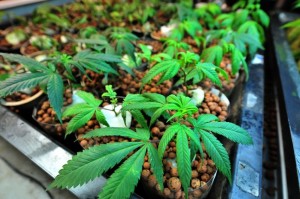 Parzybok’s lawyer, Michael Culter, acknowledged Parzybok grew cannabis but said he got “caught in the breach” between the legalization of MMJ in 2012 and the practical hardships patients still face in getting the drug.
Parzybok’s lawyer, Michael Culter, acknowledged Parzybok grew cannabis but said he got “caught in the breach” between the legalization of MMJ in 2012 and the practical hardships patients still face in getting the drug. The Croatian government announced in October that it was
The Croatian government announced in October that it was  There is no medical marijuana in Asia, either, except in Israel, though there are disputed reports that cannabis is widely used in North Korea. The drug is semi-decriminalized in parts of Australia, but that country does not allow MMJ. Uruguay has legalized all marijuana, and it is the only country south of the equator that officially recognizes medical use.
There is no medical marijuana in Asia, either, except in Israel, though there are disputed reports that cannabis is widely used in North Korea. The drug is semi-decriminalized in parts of Australia, but that country does not allow MMJ. Uruguay has legalized all marijuana, and it is the only country south of the equator that officially recognizes medical use. The phenomenon is hardly new. Indeed, it’s been reappearing this time each year at least since Colorado and Washington became the first states to
The phenomenon is hardly new. Indeed, it’s been reappearing this time each year at least since Colorado and Washington became the first states to  Well, for one thing, it’s much easier to trace the origins of Halloween candy than, say, a bottle of aspirin without a label. While candy doesn’t come with individual UPC numbers, it’s relatively easy to narrow the probable suspects by determining where an injured child stopped to trick or treat.
Well, for one thing, it’s much easier to trace the origins of Halloween candy than, say, a bottle of aspirin without a label. While candy doesn’t come with individual UPC numbers, it’s relatively easy to narrow the probable suspects by determining where an injured child stopped to trick or treat.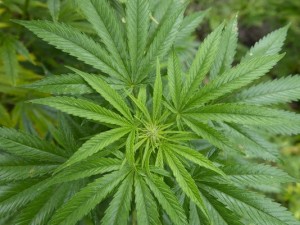 Detectives said they could smell the marijuana plants when they got to the house. Lorenzo Aday told the detectives and their fellow sheriff’s deputies that he and his wife were growing cannabis, and consented to a search of the home.
Detectives said they could smell the marijuana plants when they got to the house. Lorenzo Aday told the detectives and their fellow sheriff’s deputies that he and his wife were growing cannabis, and consented to a search of the home. NYPD Commissioner William Bratton told a law school event in October that he recently came upon a young woman
NYPD Commissioner William Bratton told a law school event in October that he recently came upon a young woman  Bratton’s remarks came in response to a question from an audience member who said she belongs to a group that supports legalization. Though Bratton and de Blasio oppose recreational legalization,
Bratton’s remarks came in response to a question from an audience member who said she belongs to a group that supports legalization. Though Bratton and de Blasio oppose recreational legalization,  The
The  The Oregon Retail Cannabis Association said there were $3.5 million in sales on Oct. 1 alone. Business was so good officials say the industry is outpacing those in Washington and even Colorado. Washington took roughly a month to earn its first $2 million, while Colorado took in $5 million in its first week.
The Oregon Retail Cannabis Association said there were $3.5 million in sales on Oct. 1 alone. Business was so good officials say the industry is outpacing those in Washington and even Colorado. Washington took roughly a month to earn its first $2 million, while Colorado took in $5 million in its first week.
 In the car, officers allegedly found a glass pipe, rolling papers, several roaches, and a glass jar full of marijuana. Police said the man would be charged with drug possession and
In the car, officers allegedly found a glass pipe, rolling papers, several roaches, and a glass jar full of marijuana. Police said the man would be charged with drug possession and  A series of coordinated raids across the state resulted in more than 30 arrests over six weeks. The campaign is part of an effort by local police and federal agents to
A series of coordinated raids across the state resulted in more than 30 arrests over six weeks. The campaign is part of an effort by local police and federal agents to  Federal officials said they’re concerned that marijuana is flowing from legal states into states where the drug is still prohibited. Observers have called those worries overblown and have pointed to data showing no uptick in interstate marijuana trafficking. Still, Walsh said federal agents would focus on transit issues.
Federal officials said they’re concerned that marijuana is flowing from legal states into states where the drug is still prohibited. Observers have called those worries overblown and have pointed to data showing no uptick in interstate marijuana trafficking. Still, Walsh said federal agents would focus on transit issues. Bob Lobel, a legend on the city’s sports beats, said
Bob Lobel, a legend on the city’s sports beats, said  Lobel said his daughter, who lives in Oregon, got him an appointment with an MMJ doctor there earlier this year. He got a medical marijuana card – Oregon is the only state that allows visitors to register for MMJ – and started using. The process took three days, he said.
Lobel said his daughter, who lives in Oregon, got him an appointment with an MMJ doctor there earlier this year. He got a medical marijuana card – Oregon is the only state that allows visitors to register for MMJ – and started using. The process took three days, he said. A local tribe of Sioux Indians has announced plans to open
A local tribe of Sioux Indians has announced plans to open 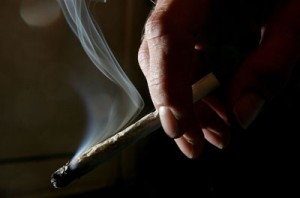 In other words, the Flandreaux Sioux can build a marijuana palace – and keep the tax proceeds for themselves. South Dakota politicians aren’t happy about this. And police say they expect serious problems with impaired driving.
In other words, the Flandreaux Sioux can build a marijuana palace – and keep the tax proceeds for themselves. South Dakota politicians aren’t happy about this. And police say they expect serious problems with impaired driving.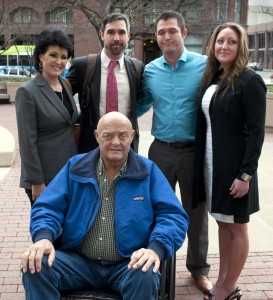 U.S. District Judge Thomas Rice handed down the sentences Oct. 2 in a federal courthouse representing the Eastern District of Washington State. Rolland Gregg was sentenced to more than 2.5 years in prison, while his wife, Michelle Gregg, and his mother, Rhonda Firestack-Harvey, each received terms of one year in federal prison.
U.S. District Judge Thomas Rice handed down the sentences Oct. 2 in a federal courthouse representing the Eastern District of Washington State. Rolland Gregg was sentenced to more than 2.5 years in prison, while his wife, Michelle Gregg, and his mother, Rhonda Firestack-Harvey, each received terms of one year in federal prison. But even as they acquitted Harvey on all charges, the jury found the other family members guilty of the lesser federal crime of
But even as they acquitted Harvey on all charges, the jury found the other family members guilty of the lesser federal crime of  The story starts in the early 1930s, when a man by the name of William Griffith “Bill” Wilson was drying out in a drunk tank after a particularly vicious bender. Two men, including a physician by the name of “Dr. Bob” Smith, visited Wilson in the hospital and encouraged him to consider God as the answer to his health problems.
The story starts in the early 1930s, when a man by the name of William Griffith “Bill” Wilson was drying out in a drunk tank after a particularly vicious bender. Two men, including a physician by the name of “Dr. Bob” Smith, visited Wilson in the hospital and encouraged him to consider God as the answer to his health problems.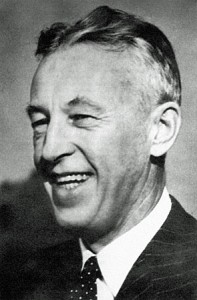 In other words, Wilson was probably tripping out of his mind when he “found” God that night. People in AA don’t like to acknowledge this fact, as it suggests a rigid abstinence-only program was founded on a drug high.
In other words, Wilson was probably tripping out of his mind when he “found” God that night. People in AA don’t like to acknowledge this fact, as it suggests a rigid abstinence-only program was founded on a drug high. Common wisdom says the liberalizing of these drug policies should lead
Common wisdom says the liberalizing of these drug policies should lead  Authors of the study, including Renee M. Johnson, assistant professor in the Department of Mental Health at Johns Hopkins University Bloomberg School of Public Health, noted that most teen drug use is on the decline, despite dire warnings from the drug war crowd. Johnson said his team studied teenage use of a variety of substances.
Authors of the study, including Renee M. Johnson, assistant professor in the Department of Mental Health at Johns Hopkins University Bloomberg School of Public Health, noted that most teen drug use is on the decline, despite dire warnings from the drug war crowd. Johnson said his team studied teenage use of a variety of substances.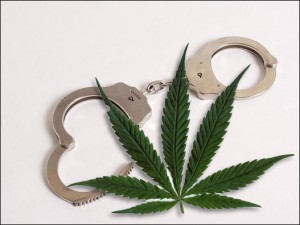 Law enforcement agencies across the United States – local, state, and federal – are
Law enforcement agencies across the United States – local, state, and federal – are  Americans waste huge amounts on money on
Americans waste huge amounts on money on 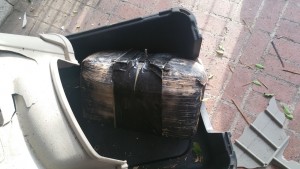 Two Nogales, Ariz., residents, Bill and Maya Donnelly, woke on the night of Sept. 8 to a loud thud. They assumed it was thunder and returned to sleep. But the next day, they found a giant hole in the roof of their carport and their dog kennel crushed by a
Two Nogales, Ariz., residents, Bill and Maya Donnelly, woke on the night of Sept. 8 to a loud thud. They assumed it was thunder and returned to sleep. But the next day, they found a giant hole in the roof of their carport and their dog kennel crushed by a